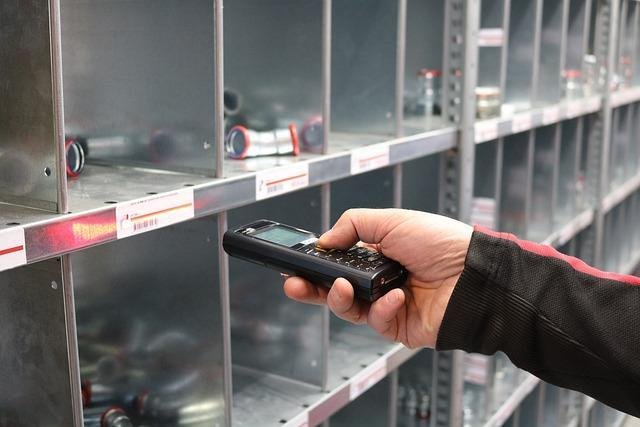Inventory management is crucial for any e-commerce business. Not only does it make it easier to find the items you need when you need them, but it also helps to ensure that your customers can always find what they are looking for. There are a number of different inventory management strategies that you can use in order to keep your e-commerce inventory organized. In this article, we will discuss some of the best strategies that you can use.
Why inventory management is important for e-commerce businesses?
Any e-commerce business needs to have a well-organized inventory in order to be successful. There are a number of reasons for this. First, it helps you to know what products you have in stock and where they are located. This makes it easier for you to find the items you need when you need them.
An organized inventory makes it easier for your customers to find the products they are looking for. If your inventory is disorganized, your customers may become frustrated and leave your site without making a purchase.
Also, it can help you to avoid stockouts and backorders. If you know what products you have in stock, you can plan your production accordingly and make sure that you always have the products your customers are looking to buy.
The benefits of using an inventory management system
There are a number of benefits to using an inventory management system.
It helps you to save time
If you have a large inventory, it can be difficult to keep track of everything manually. An inventory management system can automate many of the tasks associated with keeping track of your inventory, such as counting products and updating stock levels.
It helps you to save money
If you know what products you have in stock, you can avoid purchasing products that you do not need. This can lead to significant savings over time.
It helps you to improve customer service. If your customers can always find the products they need, they will be more likely to continue doing business with you.
It helps you to reduce shrinkage
Shrinkage is the term used to describe the loss of inventory due to theft, damage, or other causes. If you have a good inventory management system in place, you will be able to track your inventory closely and quickly identify any losses. This can help you to take steps to prevent shrinkage from happening in the future.
Types of inventory management systems
There are a number of different types of inventory management systems available on the market. The type of system you choose will depend on a number of factors, such as the size of your inventory and the complexity of your business operations. Some common types of inventory management systems include:
1. Basic inventory management systems
These are typically designed for small businesses with simple inventory needs. They may include features such as product tracking and reordering alerts.
There are a number of different basic inventory management systems available on the market. Some common examples include Microsoft Excel and Google Sheets. If you are comfortable using these programs, they can be a good option for small businesses with simple inventory needs.
In order to use a basic inventory management system effectively, you need to track your inventory levels closely. This means counting your products on a regular basis and updating your stock levels in the system accordingly.
If your stock levels fall below a certain point, you will need to reorder the product. In most cases, this can be automated using the inventory management system.
2. Advanced inventory management systems
These systems can provide a great deal of value to businesses that have a large and complex inventory. They can help you to track your inventory more closely, make better decisions about what products to order, and reduce the likelihood of stockouts and backorders.
If you are looking for a comprehensive inventory management system, be sure to consider the features that are important to you and your business. Make sure the system is easy to use and can accommodate the size of your inventory.
3. Cloud-based inventory management systems
Cloud-based systems are hosted on the internet and can be accessed from anywhere with an internet connection. This makes them ideal for businesses with multiple locations or for businesses that sell online and in brick-and-mortar stores. They offer the benefit of being able to scale up or down as your business needs change.
Cloud-based inventory management systems offer several advantages over traditional, locally-installed systems. First, they are much easier to set up and use. There is no need to install any software on your computer; all you need is an internet connection.
4. Enterprise resource planning (ERP) systems
These are comprehensive business software solutions that include an inventory management module. They are typically used by large businesses with very complex inventory needs. ERP systems are designed to integrate all aspects of a business, from accounting to customer relationship management (CRM).
ERP systems can be complex and expensive, but they offer a lot of features and functionality. If you’re serious about growing your e-commerce business, an ERP system is worth considering.
5. Warehouse management systems (WMS)
A warehouse management system (WMS) is a software application that helps warehouse managers control and track inventory levels, orders, and shipments. A WMS can also be used to automate and optimize warehouse operations.
WMS systems are designed to improve accuracy and efficiency in the warehouse by streamlining tasks such as receiving, picking, and shipping. In addition, WMS applications can provide real-time visibility into inventory levels and help managers make better decisions about stocking levels and order fulfillment.

While a WMS can be a valuable tool for managing e-commerce inventory, it is important to select the right system for your needs. There are many different WMS solutions on the market, so it is important to do your research and select a system that will work well with your existing systems and processes.
In general, choosing the right inventory management system for your business can be a complex task. It is important to do your research and choose a system that will meet the specific needs of your business.
How to implement an inventory management system
If you have decided that an inventory management system is right for your business, there are a few steps you need to take in order to implement it successfully.
1. Identify your goals
Before you start shopping for an inventory management system, you need to take a step back and identify your specific goals. What do you hope to achieve by implementing an inventory management system? Do you want to improve customer service? Reduce shrinkage? Save time or money? Once you know what you want to achieve, you will be able to narrow down your options and choose a system that is right for your needs.
2. Evaluate your options
There are a number of different inventory management systems on the market. Take some time to evaluate your options and choose the system that is right for your business. Consider factors such as the features offered, the cost, the ease of use, and whether it integrates with other software solutions you are using.
3. Train your employees
Once you have chosen an inventory management system, you need to make sure that your employees are properly trained on how to use it. This will help to ensure that the system is used correctly and that you achieve your desired results.

4. Monitor your progress
After you have implemented an inventory management system, it is important to monitor your progress and assess its effectiveness. Are you achieving the goals you set out to achieve? If not, why not? Adjustments may need to be made in order to improve the system’s performance.
An inventory management system can be a valuable tool for any e-commerce business. By taking the time to choose the right system and implement it effectively, you can improve customer service, reduce shrinkage, and save time and money.

How to choose the right inventory management system for your business?
The type of inventory management system you choose will depend on a number of factors, such as the size of your inventory and the complexity of your business operations. You will also need to consider the cost of the system and whether you want a cloud-based or premises-based solution.
If you are looking for a comprehensive inventory management system, be sure to consider the features that are important to you and your business. Make sure the system is easy to use and can accommodate the size of your inventory.
The size of your business
If you have a small business with a limited number of SKUs, a basic inventory management system will suffice. However, if you have a large business with many SKUs and complex inventory needs, you will need a more advanced system such as an ERP or WMS.
The type of products you sell
If you sell products that are perishable or have a short shelf life, you will need to track your inventory more closely. This means that you will need an inventory management system with real-time updates. On the other hand, if you sell products that have a long shelf life, you can get by with a less sophisticated system.
Your budget
The cost of an inventory management system can vary widely. You need to consider your budget when choosing a system. There are many free and low-cost options available, but these may not have all the features you need. If you have the budget for it, an enterprise-level system such as an ERP or WMS can offer a lot of benefits.
Your business needs
Take some time to assess your specific business needs before choosing an inventory management system. What do you need the system to do? Do you need real-time updates? Are you selling products internationally? Do you need to track multiple warehouses? Once you know what features you need, you will be able to narrow down your options and choose a system that is right for your business.
Your level of expertise
If you are not familiar with inventory management systems, you may want to choose a system that is easy to use and does not require a lot of training. However, if you have the time and resources to invest in training, you can choose a more complex system that offers more features.
The features you need
When you are evaluating inventory management systems, take a close look at the features each system offers. Make sure that the system you choose has the features you need. Otherwise, you may end up paying for features you will never use.
How to troubleshoot common problems with inventory management systems
If you are experiencing problems with your inventory management system, there are a few things you can do to troubleshoot them. Here are a few tips:
Check the system’s logs
A system’s log is a key resource for tracking inventory levels and keeping on top of stock management. By regularly checking the log, you can ensure that your inventory data is accurate and up to date.
The logs can be helpful in troubleshooting system problems. They will show you what errors have occurred and may help you to identify the source of the problem. They will also show what actions were taken and when they occurred. This can be helpful in taking further action.
Consult the help files
Many inventory management systems come with comprehensive help files that can be extremely helpful when it comes to keeping your e-commerce inventory organized. Be sure to consult the help files whenever you have a question about how to use the system. In addition, there are often online forums or user groups where you can ask questions and get advice from other users of the system.
Contact the system’s support team
If you are still having problems after checking the logs and consulting the help files, contact the system’s support team. They may be able to help you resolve the issue.

Reboot the system
If all else fails, try rebooting the system. This may fix some minor glitches that are causing problems with the system’s operation.
Upgrade the system
If you are still having problems after taking all of the above steps, it may be time to upgrade to a new or different inventory management system. Choose a system that is right for your business needs and budget.
Taking the time to troubleshoot problems with your inventory management system can save you a lot of time and frustration in the long run. By following the tips above, you can resolve the most common issues quickly and efficiently.
Final thoughts on how to keep your e-commerce inventory organized
When it comes to keeping your e-commerce inventory organized, there are a number of different things to keep in mind. Here are a few final thoughts:
1. Make sure you have the right system in place. Choose an inventory management system that is right for your business needs and budget.
2. Make sure you are familiar with the system’s features. Make sure the system you choose has the features you need in order to manage your inventory effectively.
3. Train your staff on how to use the system. If you are not familiar with inventory management systems, you may want to choose a system that is easy to use and does not require a lot of training. However, if you have the time and resources to invest in training, you can choose a more complex system that offers more features.
4. Troubleshoot any problems that occur. If you are experiencing with your inventory management system, there are a few things you can do to troubleshoot them. Consult the help files, contact the system’s support team, and reboot the system if necessary.
5. Upgrade to a new or different system if necessary. If you are still having problems after taking all of the above steps, it may be time to upgrade to a new or different inventory management system. Choose a system that is right for your business needs and budget.
There are a number of different inventory management strategies that you can use in order to keep your e-commerce inventory organized. In this article, we have discussed some of the best strategies that you can use. Implementing these strategies can help you to improve the efficiency of your business and reduce the likelihood of stockouts and backorders.






